This Post May Contain Affiliate Links. Please Read Our Disclosure Policy.
Air fryer salmon is quick, easy, and wonderfully foolproof. Made with a handful of simple ingredients, this recipe gives you tender, flaky salmon with an incredible, crisp crust, all in just 10 minutes start to finish.
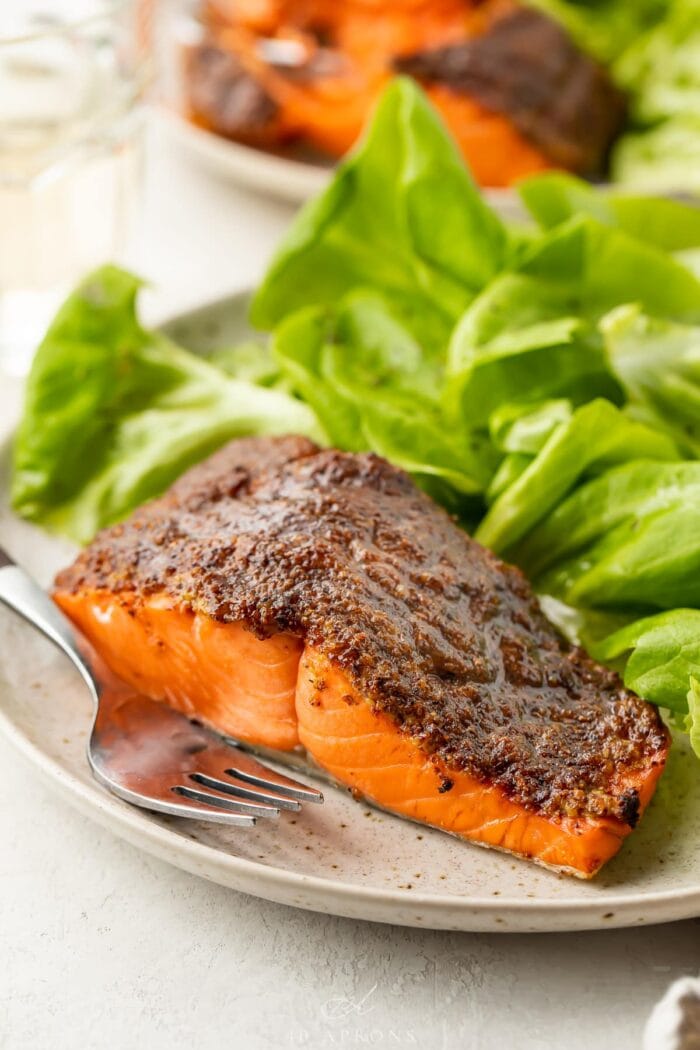
🐟 What Makes This Salmon So Good
- Air fryer salmon is SO quick and easy. This cooking method gives you tender, flaky salmon in 10 minutes or less. Plus, I can’t even put into words just HOW GOOD the brown sugar + Dijon mustard crust is
- This is a stunning main course that pairs wonderfully with a variety of veggies. I like to serve this air fryer salmon with air fryer asparagus, Hasselback sweet potatoes, Instant Pot broccoli, or even just a simple side salad with spinach and red lettuce.
- Whether you cook it in the air fryer or not, salmon is full of good-for-you vitamins, nutrients, and omega-3 fatty acids. Omega 3s can help with rheumatoid arthritis, cognitive function, and eye health. Other nutrients in salmon can help you sleep better (thanks tryptophan) and can even give your immune system a little boost.
- Leftover salmon will keep in the refrigerator for 2 to 3 days, just as long as you keep it in an airtight container. You can reheat the salmon in the air fryer, too. Just spray the basket lightly, preheat the air fryer to 350° Fahrenheit, and cook the salmon 3 to 5 minutes, until it’s heated through.
👩🏼🍳 Chef’s Tips
- Be sure you’re using an air fryer safe spray oil. Canned aerosol sprays can actually damage the coating on the fryer basket, due to the harsh ingredients they contain. The safest way to spray oil in your basket is to use an oil mister/sprayer.
- Don’t overcrowd the basket. The air has to be able to circulate around the food completely. If it can’t, the food won’t cook evenly. Since you’re only working with 2 salmon fillets here, you shouldn’t have any trouble, but if your air fryer basket is small you may need to cook each fillet separately.
- How do you know your salmon is cooked through? Well, there’s 2 easy ways. One way is to just use an internal meat thermometer. Well-done salmon should be 145° Fahrenheit internally. The other option is to go by appearances. Well-done salmon will be pink and completely opaque, but rare salmon is translucent and more of a bright red. Images like these give an idea of what each temperature looks like.
- If you’re concerned about overcooking your salmon, it’s better to take it out of the air fryer a little early than a little late. Let the salmon rest (covered with foil) and it’ll keep cooking internally. If your goal is a 145°F, well-done salmon, you can take it out of the air fryer when it’s 140°F inside. Let it rest 5 minutes, then check it again.

More Air Fryer Recipes You’ll Love
- Air Fryer Potato Wedges
- Air Fryer Steak with Easy Herb Butter
- Frozen Chicken Breast in the Air Fryer
- Air Fryer Shrimp with Comeback Sauce
- Air Fryer Frozen French Fries
- Parmesan Zucchini Fries
- Air Fryer Frozen Chicken Nuggets
- Crispy Air Fryer Chicken Wings in Buffalo Sauce
- Air Fryer Tilapia
- Air Fryer Pecan-Crusted Chicken with Honey Mustard Sauce
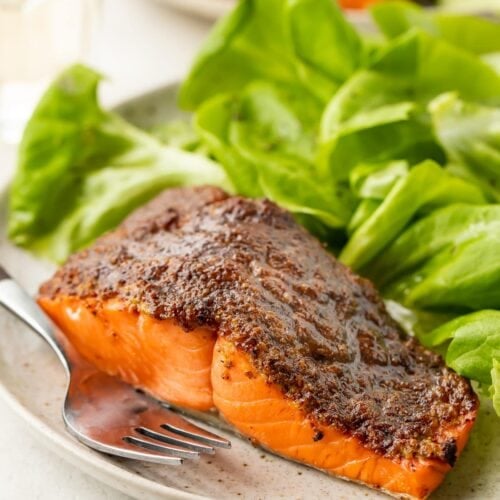
Air Fryer Salmon
Equipment
- air fryer
- Large plate
- Small bowl
- Spoon
- Paper towels
- Basting Brush
- neutral cooking spray safe for air fryers
- internal meat thermometer
Ingredients
For the Salmon
- 2 6-ounce salmon fillets
For the Crust
- 1 packed tablespoon brown sugar see Notes
- ½ teaspoon salt more or less to taste
- freshly ground black pepper to taste
- 1 tablespoon Dijon mustard divided
Instructions
- Preheat air fryer to 400° Fahrenheit. Place 2 6-ounce salmon fillets skin-side down on large plate and set aside.
- Add 1 packed tablespoon brown sugar, ½ teaspoon salt, and freshly ground black pepper to small bowl. Stir ingredients together until thoroughly blended. Set aside.
- Pat salmon fillets dry with paper towels. Brush ½ tablespoon Dijon mustard on top of each salmon fillet, then liberally coat top each fillet with brown sugar mixture.
- Remove basket from air fryer and spray basket with neutral cooking spray. Place salmon fillets skin-side down in basket, making sure not to stack or overlap fillets, and return basket to air fryer.
- Cook salmon 5 to 8 minutes. See Notes below for suggested cook times and salmon temperatures.
- Once desired temperature is achieved, remove basket from air fryer and transfer salmon fillets to plate. Set aside to rest 5 minutes.
- Serve salmon warm with desired sides.
- Make it Keto: Use Brown Swerve in place of the brown sugar.
- Make it Paleo: Use coconut sugar and an organic, paleo-friendly Dijon mustard.
Suggested Cook Times Based on Doneness
- Medium-Rare: Remove from air fryer when salmon reaches 110° Fahrenheit internally. Let fillets rest 5 minutes. Serve between 115° to 120° Fahrenheit.
- Medium: Remove from air fryer when salmon reaches 115° Fahrenheit internally. Let fillets rest 5 minutes. Serve between 120° to 125° Fahrenheit.
- Medium-Well: Remove from air fryer when salmon reaches 120° Fahrenheit internally. Let fillets rest 5 minutes. Serve between 125° to 140° Fahrenheit.
- Well-Done: Remove from air fryer when salmon reaches 130° Fahrenheit internally. Let fillets rest 5 minutes. Serve between 140° to 150° Fahrenheit.
Approximate Information for One Serving
Nutrition Disclaimers
Number of total servings shown is approximate. Actual number of servings will depend on your preferred portion sizes.
Nutritional values shown are general guidelines and reflect information for 1 serving using the ingredients listed, not including any optional ingredients. Actual macros may vary slightly depending on specific brands and types of ingredients used.
To determine the weight of one serving, prepare the recipe as instructed. Weigh the finished recipe, then divide the weight of the finished recipe (not including the weight of the container the food is in) by the desired number of servings. Result will be the weight of one serving.
Did You Make This Recipe?
Tag @40aprons on Instagram and be sure to leave a review on the blog post!
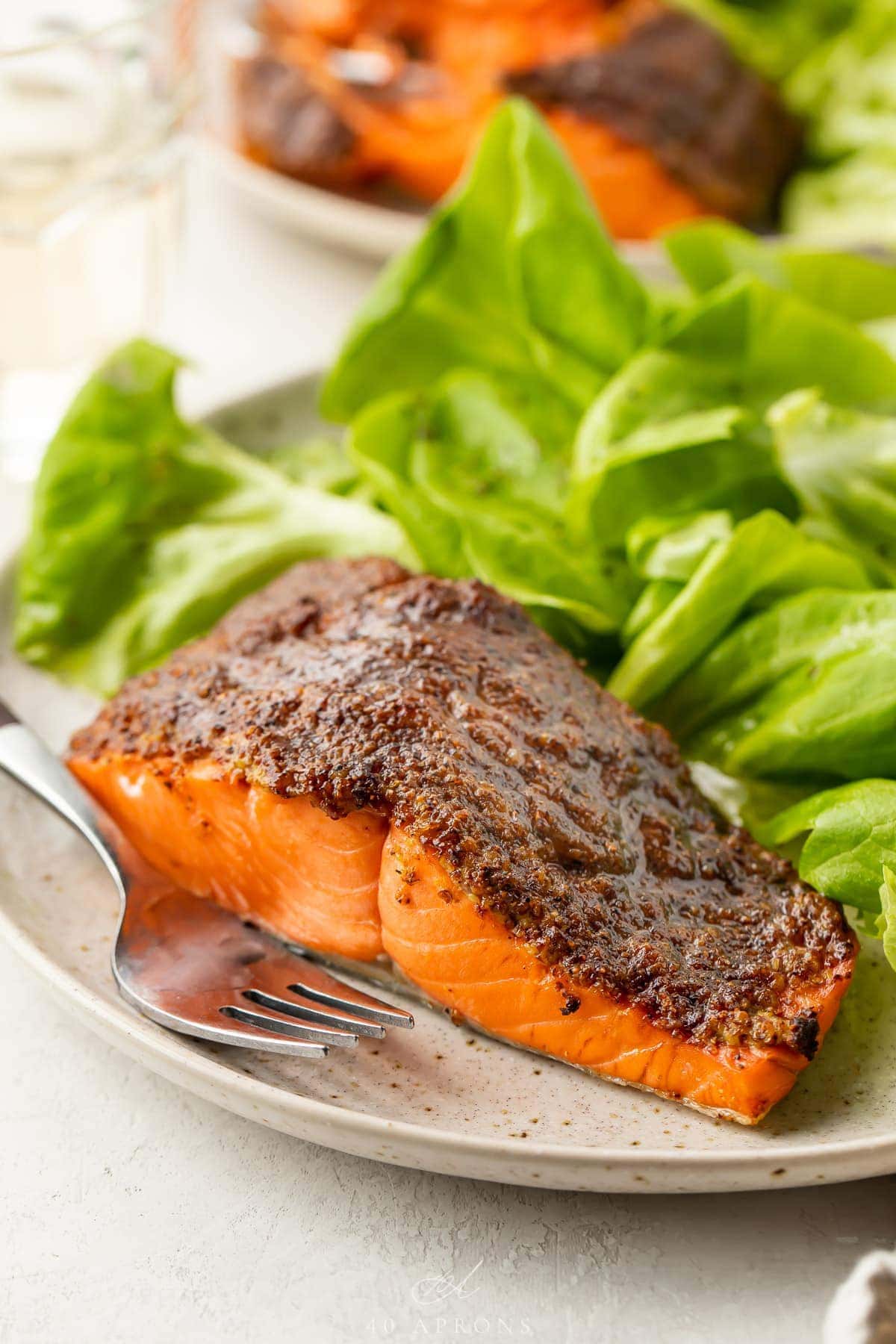
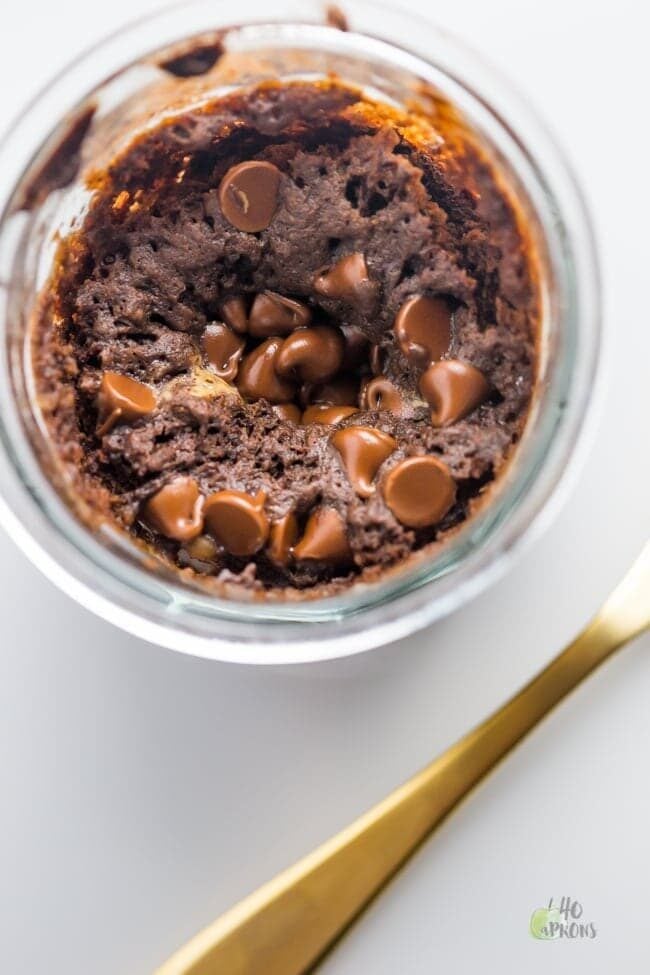
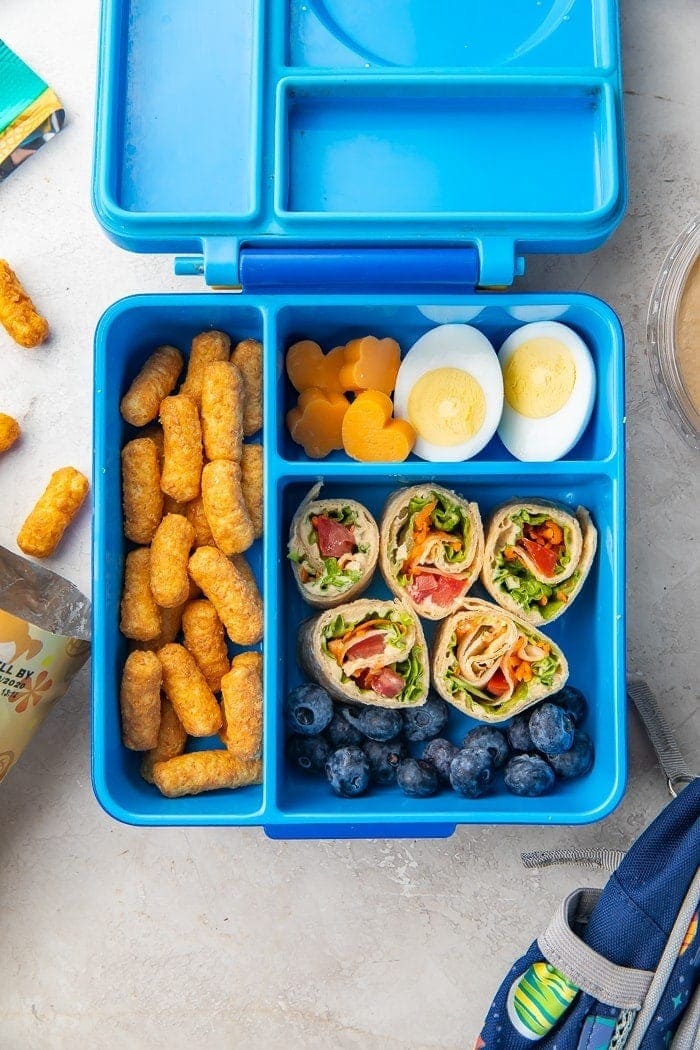
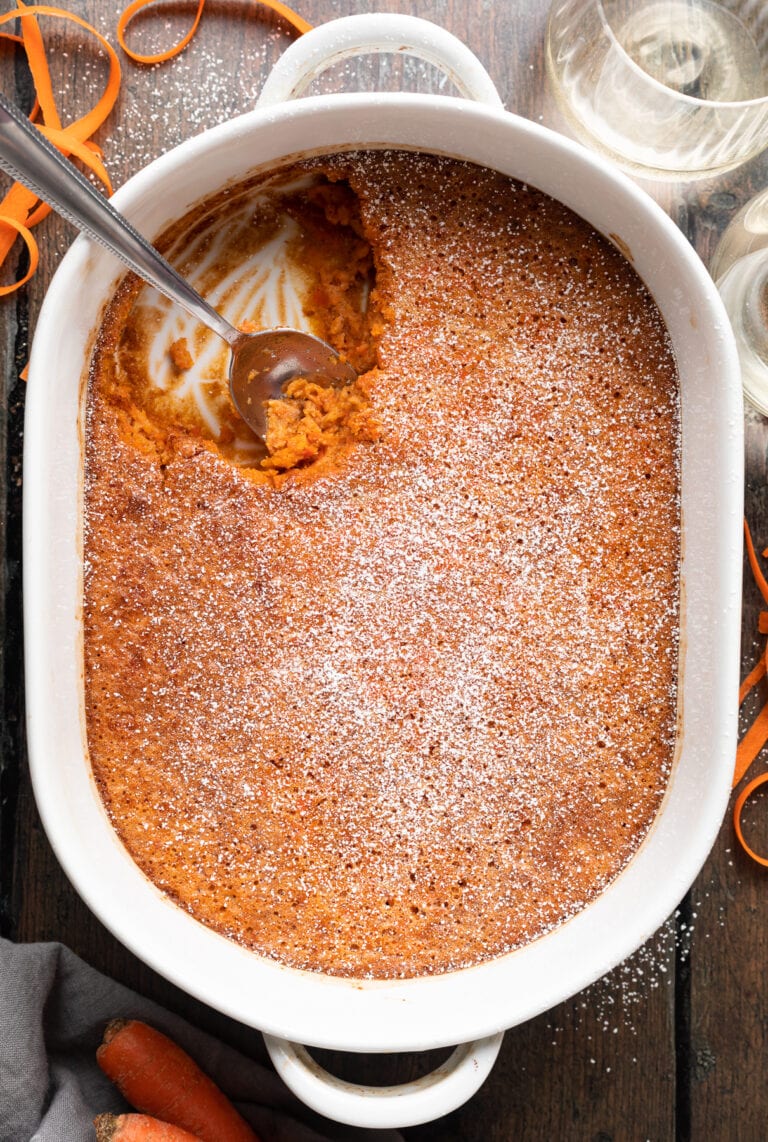
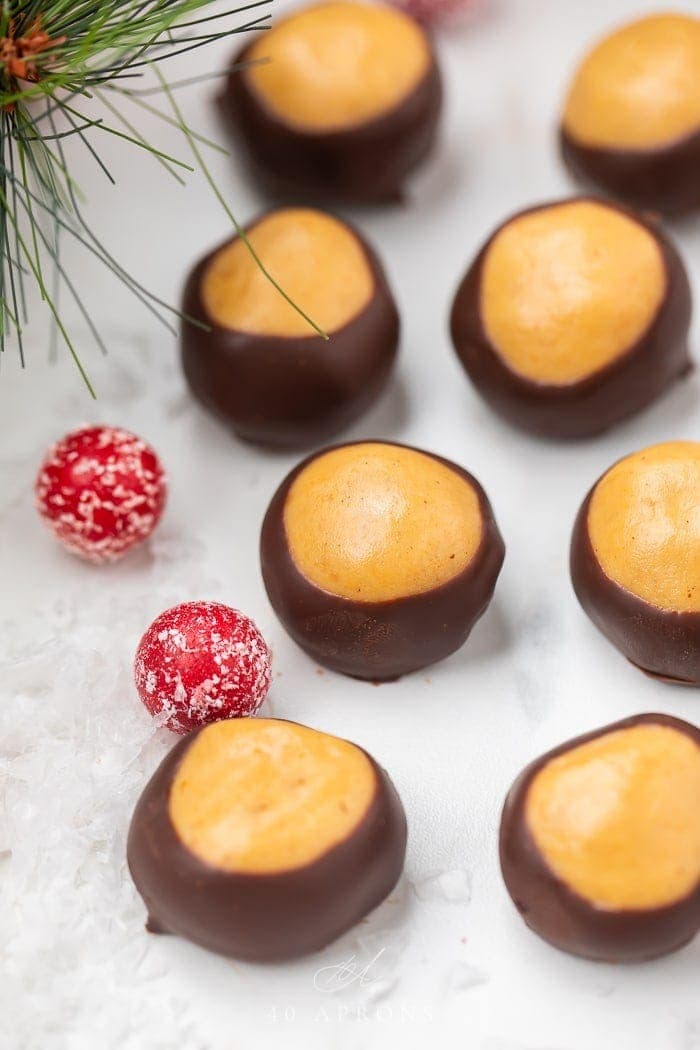
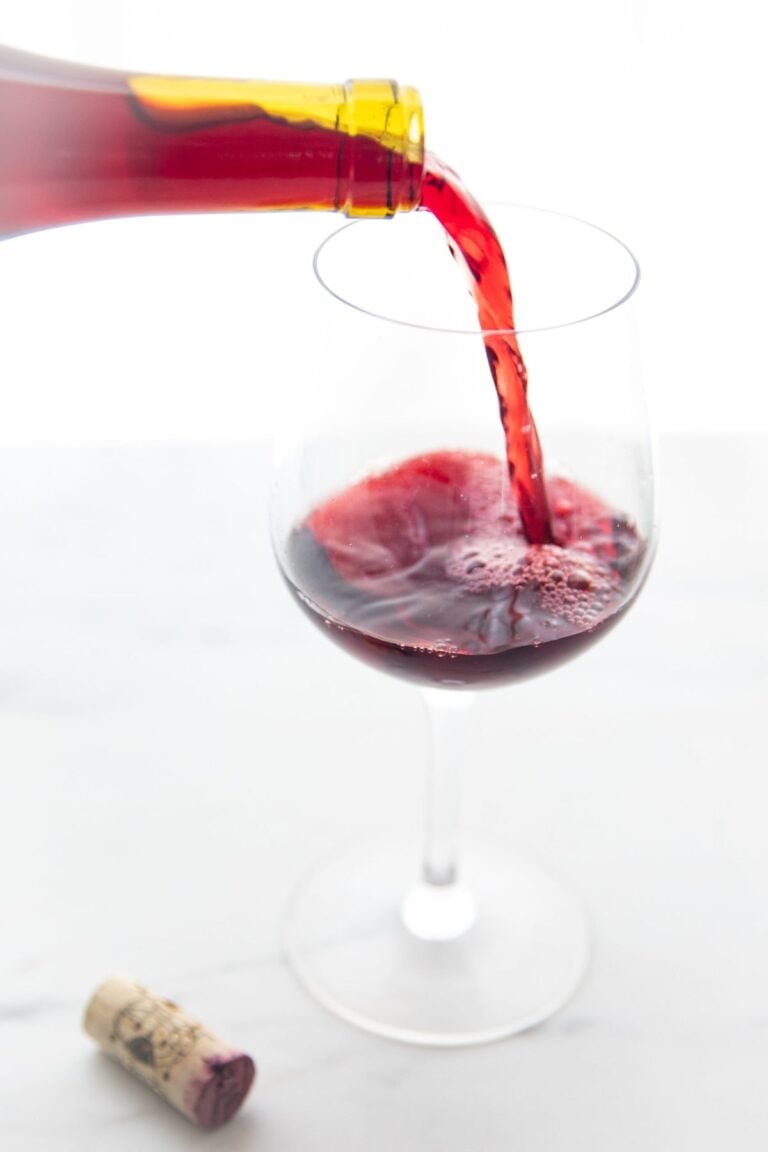











Never Miss A Meal!
New Recipes Straight To Your Inbox
A curated selection of our most recent recipes, delivered straight to your inbox once a week.
Thank you!
You have successfully joined our subscriber list.